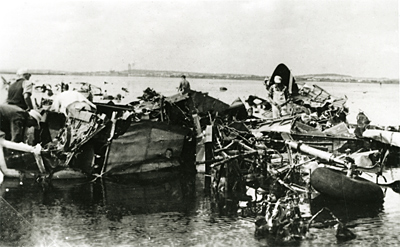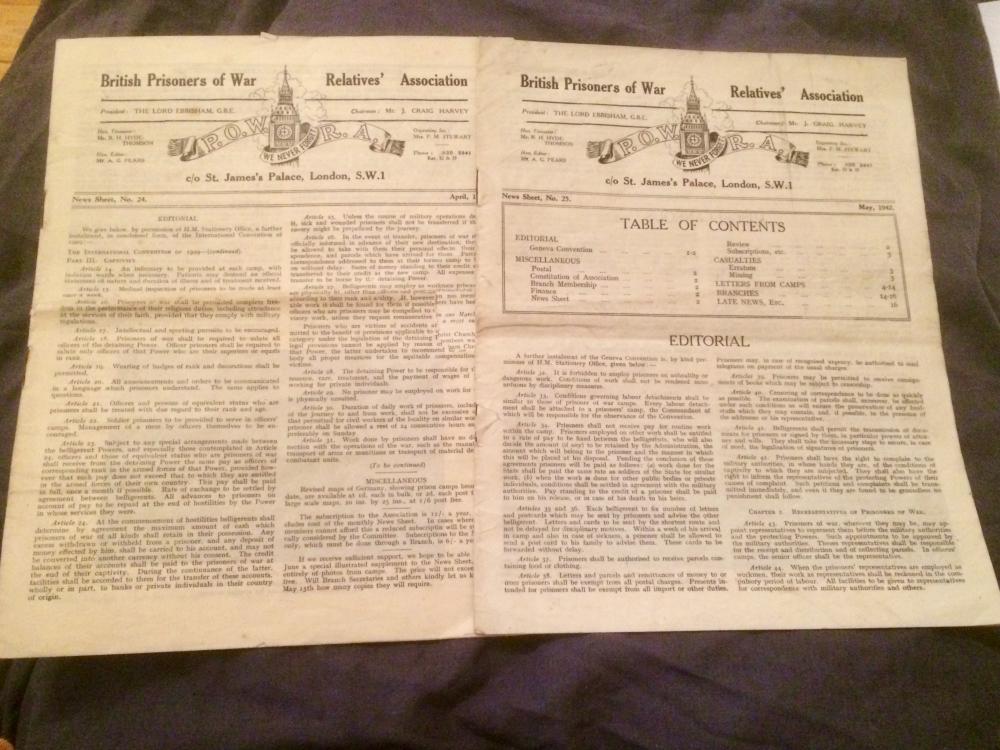-
Posts
220 -
Joined
-
Last visited
-
Days Won
11
Content Type
Profiles
Forums
Blogs
Gallery
Events
Store
Everything posted by POWCollector
-
William Frederick Sutton was born in the parish of Old Kilpatrick, Dunbarton, Scotland, on the 5th October, 1914. He was the son of William Frederick (snr.) and Sarah Ann Sutton, of Burns Street, Dalmuir. The couple had married in Glasgow on the 2nd September, 1910; father being a Shipyard Labourer. The family sometime moved to Yoker, Glasgow, from where young William left to join the Seaforth Highlanders as a Regular Army soldier, on the 5th April, 1932. He served in Palestine with the 1st Battalion, during the troubles there. Medal Roll WO100/507 - 1st Bn. Seaforth Highlanders (part), confirms a total number of 634 GSM 'PALESTINE' claims, to officers and other ranks of the regiment. The Battalion's roll was signed at Shanghai, 11th March, 1940. Sutton's entry therein, was marked 'N.E.' (Non Effective); an indication that he was off of the battalion's strength by that time, probably in consequence of his transfer to the 2nd Battalion. The 2nd Bn. Seaforth Highlanders, as part of 152 Infantry Brigade, 51st (Highland) Division, was stationed in the U.K. in 1939. It embarked for service with the British Expeditionary Force in France, in mid-Janruary, 1940, departing from Southampton for Le Havre. Upon arrival, it was then deployed to cover the Maginot Line to the front of the Ouvrage Hackenberg fortress. Thus, it escaped the German Army's encirclement of the rest of the BEF in May, at Dunkirk, but was then forced to defend new positions, roughly following the course of the River Somme. Eventually having been pushed back to the coast by the German Blitzkreig, 152 and 153 Infantry Brigades found themselves cut-off at the coastal port of St.Valery-en-Caux, and was forced to surrender en masse, on June, 12th, 1940. Sutton was captured the following day, on the 13th June. Along with thousands of other defeated troops being marched in guarded columns to internment camps, he, with two other regimental companions, saw an opportunity to escape when near the French/Belgian border. Having successfully made their escape, they remained at large for five weeks, until recaptured by a German Coastal Artillery unit on the French coast, at Merlimont; no doubt whilst in search of a small boat to get themselves back across the Channel. Of the escape, Sutton wrote : Quote: escape[d] from the line of march in France at Roubaix by falling out and hiding in a wheatfield. My companions were L/C Myers amd Pte. Mulholland, bI oth of my regiment. I was recaptured by a German Coastal Battery five weeks later at Merlimont. I was fit. My companions were captured at the same time. (Ref: M.I.9 POW Repatriation Questionnaire : signed 8th May, 1945 : WO344/309/2) In due course, the captives were marched off again for holding at Frontstalag 210 at Strasbourg, arriving there on the 10th August 1940. His subsequent movements and detachments were: Hueburg, Baveria, 15/12/1940 - 10/02/1941 Stalag 21-CZ, Poland, 12/02/1041 - 04/06/1941 Stalag XX-B, at Marienburg, Poland, 06/06/1941 - 27/01/1945 At Marienburg, Sutton was detailed to join various Arbeitkommandos, as a Labourer at Stargard and Wernesdor. The main camp was evacuated by the Germans in January 1945, ahead of the Soviet Red Army's advance, and thus, Sutton became one amongst a great number of Allied prisoners who were placed on 'The March' - a series of forced marches westward, which lasted upward of three months, through freezing wintery conditions, into the German interior. Close to the time of the German unconditional surrender, Sutton was duly liberated and returned to England for repatriation, on or about the 8th May, 1945 - 'V.E.' Day. After the war, the action at St.Valery-en-Caux, in 1940, became a Battle Honour for The Seaforth Highlanders, whilst Sutton remained in the Army, transferring to the Royal Army Service Corps. He was sometime promoted to Warrant Officer Class II, and served in Cyprus during the 1955-1959 disturbances, and, through his due medal qualification, was erroneously issued with a second General Service Medal 1918, with clasp 'CYPRUS', instead of the clasp to his previously earned GSM for Palestine. Obviously, but for the existence of this second medal, his post-war service and promotions would have remained in current obscurity. At this moment in time, little else is known to me about his service or life after his Army retirement. However, Sutton's death was registered in Birkenhead, Cheshire, in October, 1987. He would then have been 73 years old.
-
Stanley Brabbin was born in 1908 In Bolton, Lancashire to James and Alice Brabbin. He was Husband of Annie Brabbin and resided in Walshaw, Yorkshire. In 1941, Stanley enlisted into the Royal Artillery and was posted to the 69th Battery, 21st Light Anti Aircraft regiment. He was now 1824274 Gnr S Brabbin RA. He was sent with the regiment to Singapore but with the Japanese invasion and impending fall of Singapore, the regiment escaped. They disembarked at Batavia on the 4th of February 1942. The 21st LAA regiment were posted to Eastern Java on Airfield Defence duties. During the night of 28th Feb / 1st of March 1942, the Japanese landed a heavy force of troops and tanks on the north of the island of Java and pressed inland. The Japanese caught up with the 21st LAA Regt on the 8th of March 1942 and Stanley was taken prisoner. Stanley was held in Java until October 1942 when the Japanese started to ship off POW’s as forced labour either to Japan to work in mines or to Thailand via Singapore to work on the infamous Burma Railway. Stanley was sent to Thailand. The work and sanitary conditions were appalling and thousands of prisoners died of exhaustion and disease as a result poor medical facilities. Sadly, Stanley Brabbin was in this unlucky group and died of Dysentary on the 17th of July 1943. He was buried at Kanchanaburi War Cemetery in Thailand.
-
The most recent addition to my collection is the sort of group that Prisoner of War Collectors can only dream about and i'm ecstatic to have it in my possession. Jean Tarrade was born on the 9th of February 1908 in Auxerre, France. In 1928 at the age of 20, Tarrade enlisted into the French Army at Angouleme. Now a Captain, Tarrade was heavily involved in the Battle's of Belgium and France in 1939 and 1940 and was awarded the Croix de Guerre avec Palme for his service. The citation reads: 'Company Commander, extremely active and excellent technician. Always spent countless hours, especially on 24 May 1940 in Trith-Saint-Leger, during violent attempts by the enemy to cross the Scheldt Canal. Has demonstrated the same qualities of energy and courage in Haubourdin, when encircled by the enemy from the 28th to the 31st of May 1940.' Tarrade was captured in early June 1940 and was transported to Germany arriving on the 8th of June 1940. He clearly didn't approve of being a prisoner of the Third Reich and proved to be troublesome to his captors. He escaped from captivity three times in 1940 and 1941 but was recaptured every time. For this, he was transferred to OFLAG IV-C also known as COLDITZ CASTLE where he would have arrived in the first batch of French officers in early 1941. Not much is known about Tarrade's time at Colditz Castle at this point but I am sure he would have been active in scheming escapes, 'goon baiting' and assisting other prisoners in escaping. In May 1943, the German high command decided that Colditz was only to hold British and American prisoners. In June, the Dutch officers were transported to different camps followed by the Belgians, Poles and lastly the French who left on the 12th of July 1943. Captain Tarrade was transferred to Oflag X-C at Lubeck. Here he organised and led a resistance group. His Legion d'honneur recommendation takes up the story in more detail. 'This Magnificent Officer was wounded and mentioned in 39/40 for his beautiful driving under fire during the Campaign of Belgium and Flanders. Barely recovered from his wound, he rejoined his Regiment to repress the fight. Taken prisoner in June 1940, he fought to regain his freedom. Escaped 3 times in 1940 and 1941 and was taken again. To re-pay his brave attitude, he endured 44 months of fortress, reprisals camps including 51 solitary confinement cell days over his 60 months of captivity. He Took the command of the Franc Group of Resistance Movement of Lubeck Prison Camp and his participation at the head of this Group was with the taking of the weapons of the guards, at the capture of Lubeck Port, making prisoners and capturing weapons and Ammunition.' The 'fortress' camp referenced is Oflag IV-C, Colditz Castle. After the war, Jean Tarrade served with distinction in Tunisia and in South Vietnam. He was awarded a second Croix de Guerre for his actions. The recommendation is as follows: 'Ardent and dynamic officer - Adjutant Major of a battalion in operations, still voluntary for the difficult missions - Did not stop during hard fights by his Unit in the Sub-sector of BENCAT (Province of THUDAUMONT - South Vietnam) and demonstrated a remarkable course. Was particularly distinguished in the combined operations "EMILE and JOSEPHINE "from 6 to 13 July 1949, and during specific actions in the regions of VINH HOA and the Forest of AN SON - At the head of elements of reinforcements, participated until the end of March 1950 effectively in the clearance of convoys and overture groups fallen in ambushes on the road at DAUTIENG and RF 13-A, during these attacks, and despite violent reactions adverse, fact prove of the most perfect contempt of danger.' He retired as a Lieutentant Colonel. His awards are as follows: - Legion D'Honneur. 4th Class 'Officier'. 4th Republic issue circa (1946-1962) - Cross of War 1939 (Croix de Guerre). With 1 x Bronze Palm & 1 x 'Gold' Star - Cross of War for Overseas Theatres of Operations. With 1 x Silver Star citation emblem - Escapers Medal (Medaille Des Evades). With French Mint marks - Combatants Cross for Volunteers. Type II dated 1939-1945 & clasp - Combatants Cross (Croix Du Combatant). With French Mint marks - Colonial Medal. Type II with uniface suspension & clasp 'Extreme Orient' - Commmemorative Medal for Second World War 1939-1945. With clasp 'France' - Commmemorative Medal for Indochina 1945-1954 - Medal for North African security operations (Medaille D'Afriqie Du Nord). With clasp 'Tunisie' - Wound Medal (Medaille Des Blesses). With red enamelled star on riband Included with the medals were all of his medal award certificates, original recommendations, correspondence with the French POW escaper's association, liberation documents and many character letters from brother officers. A real archive. I am over the moon to finally have a Colditz POW group in my collection and with such good provenance too! Captain J Tarrade is listed in Pat Reid’s book ‘Colditz: The Full Story’ as being a member of the French contingent at Colditz.
-
Hi All, I am hoping that somebody on the forum is able to or has a contact who can help me to acquire POW escape and liberation reports? I have been using the same chap for the last 5 or so years who has been fantastic but I have not had a single reply in the last few weeks and now emails to him fail to deliver. Many thanks, Rob
-
Hi Simon, thanks very much for the comment, I’m unsure if he wouldve qualified but I have other pow groups to men who got back into the action after liberation or escape and none of them qualified for the defence medal. I suppose I’ll have to apply to the mod for the service record to find out definitively. Ive got another great post to come soon so stay tuned!
-
Next up is a partial group (Africa Service Medal is unnamed replacement so if anybody hears of the original please let me know!). George Edwin Delaval Beresford was born on the 18th of February 1909. He was an audit clerk living in Durban at the time of his enlistment into the 1st South African Irish Regiment on the 19th of February 1940. George was sent to North Africa where he was captured in the bitter fighting at Sidi Rezegh on 24/11/41. The South African Irish Regiment took heavy casualties and by the end of the battle, there were only 140 survivors of all ranks. George was held in the infamous pow cages at Benghazi for two weeks before being marched down to the docks on 08/12/41 and boarding the Italian cargo ship 'San Sebastian' and was placed in the hold with the rest of the 2000 prisoners of board. On the 12th of December 1941, the San Sebastian was torpedoed by British ship HMS Porpoise. The Porpoise did not realise that the ship was carrying allied pow's as the Italians had neglected to paint red crosses on the ship as was the normal practice. Prisoners reported that the Italian captain and crew decided to abandon ship into the lifeboats without any consideration for the allied pow's on board. It is estimated that up to 600 of the crew perished during the sinking. Luckily for those still on board the severely damaged ship, the wind direction changed and the ship was blown onto the rocks off Patras in Greece. Once the wounded were evacuated from the ship, the prisoners were taken to a barn by a nearby submarine base and from there they were marched to the dungeons of the Pylos Castle. They were later moved to transit style camps at Kalamata and Aixia. Whilst on the move, the local Greeks lined the streets offering food and cigarettes but the Italians would beat them back with their rifle butts. At the end of February 1942, George and his comrades were transported to permanent camps in Italy. George was initially held at PG 85 Tuturano from 06/03/42 until 07/05/42 when he was moved to pg 52 at Chiavari. George left Chiavari on the 20th of October 1942 and moved to pg 47 at Modena. George stayed at PG 47, a monastery near Modena until the Italian capitulation in September 1943. On the Italian capitulation and Italian guards deserting the camp, George escaped but was recaptured by the Germans and entrained for a camp in Germany. He arrived at Oflag 5A at Weinsberg on the 9th of October 1943. On the 1st of April 1945, he left Oflag 5A and moved to Stalag 7a arriving on the 4th of April. The camp was liberated by the US Army on the 29th of April and George finally left on the 7th of May 1945. pics to come soon, images are not uploading due to errors
-
Here is a new auction lot which I got for a very good price indeed! Denys Arthur Burnell was born in Ynysybwl, Pontypridd in Glamorganshire in Wales on the 13th of December 1919. On the 16th of March 1940, Denys enlisted into the 1st Battalion of the Welch Regiment. Serving first in Crete, he was captured on the 29th of January 1942 in Barce, Libya. He was transported from North Africa to Italy being held in PG 66 Capua and PG 75 Bari before ending up at his final camp, PG 53 Macerata. It was from here that Denys escaped on the capitulation of Italy. His story is taken up in his POW debrief report: "We left the camp at 16:30 on Wednesday the 15th of September despite the order to remain in camp given by Captain Frewen, RAMC, the Senior British Officer of the camp. On the second day out of the camp, we arrived at the house of Carlo Lattanzi in Massa Feramo. Here we stayed two nights and then he took us to Giovanni Menecorzi, Montappone. We stayed there for 7 nights. My two mates Pte Astley and Pte Barry returned to the house of Carlo Lattanzi. I carried on and arrived at British lines on October the 6th 1943." Under the sections 'White List and helpers' and 'Black List' on his debrief, he has named both Carlo Lattanzi and Giovanni Menecorzi as helpers and has listed his SBO Captain Frewen on the black list. Clearly he felt that his SBO had been acting on his own by ordering the men of the camp to stay put even though that order came from the top! Denys arrived back in the UK on the 6th of November and although he was by this point a Lance Corporal in the Welch Regiment, decided to opt for a demotion and transfer to the Royal Army Service Corps as a driver. He arrived in France on the 15th of July 1944 serving with 508 company RASC and remained with them until his discharge on the 10th of October 1948. Denys passed away in August 1986. What I particularly like about this group as that Denys' POW medal has the clasp 'ITALY' which I have not come across before. I hope that you enjoyed this post, more to come soon!
-
Next up is my first pow group to somebody captured in the battle of Anzio and its a cracker! John Edwin Francis Watson was born in Cardiff on the 6th of December 1918. He was the son of Major General Gilbert Watson CB DSO OBE who had joined up as a private soldier in 1914 and worked his way all the way to Major General! John was commissioned into the Royal Welch Fusiliers, his father's regiment, and served with the B.E.F in France and Belgium being evacuated back to England before the Germans were able to capture him and his men. The regiment were stationed on home service for the next two years before being sent out to India to fight against the Japanese. John did not go out to India with his regiment and was in fact attached to the 2/4th Kings Own Yorkshire Light Infantry regiment and was present in the invasion of Sicily and the invasion of Italy. John was captured on the 1st of Februrary 1944 at Anzio. John was sent to Stalag 7a at Moosberg where he had his details and photo taken by the Germans. Amazingly, John managed to get a hold of his German POW card which is shown in the image below. The smirk on his face is brilliant! On the 23rd of August 1944, John was transferred to Oflag 79 at Braunschweig. The very next day, Oflag 79 was accidentally strafed by American and British aircraft killing three and seriously wounding 14. Luckily, John was unharmed. John and his comrades were liberated by the Americans on April the 12th 1945 and he volunteered to jump back in to the action earning himself the France and Germany Star. After the war, John was promoted to Captain and served out in Palestine earning himself the General Service Medal with Palestine 1945-48 clasp (a new medal for my collection). I'm very happy to have this group with a new medal for the collection to a man captured in a new battle for the collection. I believe that the group must be very rare considering no battalions of the Welch Fusiliers served in Italy. Watson may have been the only one! I hope you enjoyed this one.
-
Hi Paul, Thanks for you comment. Kirton would have been eligible for the 1939-45 Star, the Africa Star and the War Medal but as these were issued un-named, It is very unlikely that these will ever be reunited. I am hoping that the Royal Signals Museum will be able to get back to me and give me some more information. Maybe he stayed in the service long enough to get his LSGC! Ive got some more interesting posts coming soon, time is the only issue!!
-
Next up is a new medal for my collection, The General Service Medal 1918-62 with clasp Malaya. Sadly, the recipient did not fill out a prisoner of war debrief report so I have been unable to carry out much research on him. The recipient, 2328213 Signalman R Kirton of the Royal Signals was serving as the driver in charge, headquarters battalion of the Royal Signals. He was captured, like so many, at Tobruk on the 20th of June 1942 and was taken through North Africa and over to Italy. Kirton was held latterly in PG 70 Monturano near Fermo in central Italy. He was unlucky not to get away as many did after the Italian capitulation in September 1943 and was entrained through the Bremmer Pass into Germany. Kirton ended the war in Stalag 4a at Hohenstein which was situated just 20 miles from Dresden. This was a particularly grim place to be a prisoner of war, especially due to the proximity of the camp to Dresden which was devastated by allied bombing in February 1945. Kirton stayed in the Army after the war and was sent in 1948 to serve with the regiment in the Malayan Emergency earning the GSM pictured below. I have contacted the Royal Signals Museum and hope to try and find out some more information about Mr Kirton and his more details about his service! Thanks for looking, more to come soon!
-
Next up is a very rare and interesting ww2 pair to Lieutenant Walter 'Butch' Laing of the Sherwood Foresters. Walter Laing was born on the 5th of June 1910 in Winchester, Hampshire. His father, Walter senior, served during the great war as a Lieutenant in the Coldstream Guards before transferring to Military Intelligence. Walter worked as a languages teacher at a public school before joining the 8th battalion Sherwood Foresters in January 1939. He taught German inside the pow camps which he was held in which must have made him a valuable prisoner to the escape committee! Walter was sent to Norway with the battalion but unfortunately his shooting war lasted for less than a month. His papers, held at the imperial war museum, take up the story of his capture... "Tuesday 23rd of April - Through field glasses we saw German tanks with supporting troops. We realized they must have broken through and there was very little now to stop them. Their further advance was by the hill. On our flank on one occasion, we observed British troops marching along a road above us. They went into farm buildings. The Germans had observed them too, for they soon put a shell into the farm. It must now have been well into the afternoon. After a silent spell, firing broke out near us. Movement in a farm south of us looked like German infantry. It was our own troops withdrawing. Had it not been for our Sergeant Major recognizing them, we would have fired on them; Our two Bren Guns and rifles were trained on them waiting for the order to open fire. I made a fool of myself by ordering all to put on anti-gas respirators. I thought I saw German troops wearing them but alas it was an optical illusion. It was now obvious from the direction in which the sound of firing came that we should soon be cut off. It was also obvious that the Germans were unlikely to see the east flank as their attack along the main road ad been completely successful. We were now being mortared from the slope west of the main road as well as being shelled. So far we had no casualties. If were remained, casualties were certain without achieving anything. There was still a good line of withdrawal through the trees, and a good chance of joining up wit forces north of Tretten. I eventually decided on withdrawal in small parties of two or three. Shortly after the parties started leaving, a mortar bomb came over, razing the electric wires at the side of the house in the middle of our position. It was amazing that no one was wounded. There was still a woman locked in the cellar at the bottom of the house. Every effort was made to force the door and persuade her to leave with us, but in vain. When the last party was about 200 yards from the house, some of us turned around and were amazed to see it in flames. A mortar bomb had landed on the roof. What happened to the poor woman? The sound of rifle fire was coming from the area of the house. Some of our people might have withdrawn there. It was decided to observe in case we could render assistance. A man very kindly insisted on staying with me. We remained for some time in the neighborhood. It was a great help. I was not a very cheerful person to be with: I felt that in disobeying written orders, I had deeply disgraced myself. I was wrong to allow this thought to obsess me rather than thought of what should be done in the most difficult of situations." Walter was captured later that day and was flown to Staaken, Germany. He, along with a Sergeant and a Private soldier, were met by a German officer and informed that they were to prepare for an immediate journey to Berlin. He takes up the story here... "27th April 1940 - In the morning the German officer who had met us at Staaken areodrome told me to get ready for an immediate journey. I didn't like the sound of this and I didn't want to be parted from companions. I was taken to another room where I was glad to find that the sergeant and a private soldier in our party were preparing for the same journey. A German air force colonel came to escort us. He was middle aged German officer of fiction: Tall, heavily built, fair, monocled with heels ever ready to click. He didn't seem ill disposed. He took us downstairs. The taxis were hailed from the street. Guards were put in each. I was put into the first, and the Sergeant and Private soldier into the second. The air force colonel travelled with me and we spoke in German. He asked if I knew where we were going? You are going to see Hitler. Surprised aren't you? I had little time to consider what he said. We were very soon at the chancellery. We drove through a carriage door into the private garden. When we got out, the taxi driver who appeared surprised said 'Dies ist ein Ereignis' = This is an event or something to that effect and the colonel replied 'And also for me, I have never been inside the private garden'. A lorry arrived from which was unloaded British equipment taken in Norway. This was laid out in the arcade. We saw the German Major who had brought us from Norway and an ADC. the ADC was a fine looking man in a Germany army uniform with 'Adolf Hitler' in silver braid on his sleeve. He asked me if we were being well treated. There was a movement at the window. I was amazed to see Hitler. I wondered what to do. Eventually I saluted. He acknowledged my salute raising his right arm parallel to the ground. The only person in his retinue whom i recognized was General Keitel. Hitler went straight to the arcade where we stood in front of him. The major who had brought us from Norway lectured on our uniforms and equipment. In Norway, self confident, the major was now like a controlled but nervous schoolboy. He stated that the British battle dress was good except in the lumbar regions and that the gas respirators were good except for in a lying down position. Hitler then made a tour of the equipment in the arcade. The anti tank rifle interested him the most. He picked up a clip of anti tank rounds and crunched them in his hand. An item was a tin of bully beef. Did he wish it to be opened? The only time he approached a smile was in saying No. He said very little. When Hitler was about to leave, he was informed that the officer spoke German. He asked me two questions, "Warum Sie schon einmal in Berlin?" (Have you been to Berlin before?) and on the response of 'Nein', he asked "Wo warren Sie in Deutschland?" I replied saying that I had been to Heidlberg several times. He went away saying something I could not hear and looking hostile. The air force colonel asked me if I had heard Hitler's last remarks as he had spoken in a low voice. He told me that Hitler had said "This war was not necessary. You have your government to thank for it". I have left Hitler's appearance to the end. He was no taller than me. He wore a round, peaked cap. It was difficult to see the eyes. He had a double breasted khaki jacket with the iron cross first class and wound badge on the left breast. His tie, trousers, shoes were black. He carried gloves which he kept pulling. On first impression, Keitel was more impressive looking". From Berlin, Walter was taken to two temporary POW camps in Berlin. After Berlin in May 1940, he was sent to Spangenberg Castle (Oflag IXA/H). He stayed at Spangenberg until October 1941 when he was sent to a Reprisals camp in Poland. I am trying to find out what reason he was sent to this reprisals camp for. From this camp he was sent to Oflag VIb at Warburg and then on to Oflag VIIb at Eichstatt. At this camp 65 officers escaped through a tunnel. All were recaptured and sent to Colditz, but it is very plausible that Walter may have coached some of these men in basic German. In July 1943, he was sent to his final camp, Oflat IXA/Z at Rotenburg where he stayed until March 1945 when he was marched away from the allied advance. He was liberated by American troops in April 1945. I have Walter's boxed medals; The 1939-45 Star and the War Medal along with his fathers British War Medal. Pics below. As you can imagine, this is a pretty scarce group to say the least. I doubt that many British soldiers were sent to Berlin to personally meet Hitler and it is great that the story appears in multiple books and Imperial War Museum documents!
-
Hi Guys, Next up is a rather rare group which i have been searching for for quite a while! It is incredibly hard to find Normandy Landing POW groups so I was so happy to find this! Apparently I rang up to buy it only 10 minutes after it went online! Edward Ogilvy Jamieson was born on the 4th of December 1916. Before the war, he was a Post Office sorting clerk living at 31 Dalhousie Street, Monifieth, Angus, Scotland. On the outbreak of war on the 3rd of September 1939, Edward enlisted into the 1st Fife and Forfar Yeomanry and served with the BEF in France before being evacuated from Dunkirk. Edward was based at home for the next 4 years moving to the 4th County of London Yeomanry, The Sharpshooters of the 7th Armoured Division and spent his time training and preparing for the Normandy Landings. He landed in Normandy on D-Day+1. A report made by Captain C F Millner on the 10th of July 1944 stated that Tpr Edward Jamieson was last seen at 12:00 hours on the 13th of June 1944 at Point 213, Villiers Brocage in a scout car with the Squadron Sergeant Major attending to the wounded. He was in the following circumstances of danger: "Completely surrounded with the rest of 'A' Squadron and cut off from British Forces". It is considered he should be regarded as a P.O.W for the following reasons: "When last seen, just before Germans overran the position, he was unwounded, giving treatment to those who were wounded and so not actively engaged at the time". More about the Battle of Villers-Bocage can be found here: https://en.wikipedia.org/wiki/Battle_of_Villers-Bocage Edward was first taken to Chartres where he was held from the 27th of June until the 20th of July 1944. From here, he was taken to Chalons-sur-marne prison arriving on the 24th of July. He was interrogated by a naval officer on the 6th of August who "knew all division signs, formations etc". On the 10th of August, he was transferred to Stalag XII-A at Limburg until the 1st of September 1944 when he was transferred again. On the 3rd of September 1944, (5 years to the day that he enlisted), He arrived at Stalag VIII-A at Gorlitz staying at the main camp for two weeks before being assigned to an Arbeitskommando in a Sugar Factory at Klettendorf near Breslau. Edward remained working at the sugar factory at Klettendorf until the 24th of January 1945 when he was put on a forced march to Hannover. The main camp at Gorlitz was evacuated on the 10th of February. He was marched through the bitter winter snow for 6 weeks until the 15th of March 1945 when he escaped from the column and eventually reached allied lines on the 27th of April 1945 when he was interviewed. I am so happy to have this group in my collection due to the rare regiments and the campaign that he was captured in! Hope you have all enjoyed this one!
-
Hi Mr Sabaton, Yes another member of his crew was mentioned in despatches for the same deed, but sadly Mallott was not. The MID could be awarded posthumously, many of the Great Escaper's should have been awarded the MC or DSO but as they were killed were not eligible which is very sad! They were all awarded a posthumous MID. I met a chap on remembrance Sunday who was awarded the George Medal earlier this year, and I have read a few George medal citations for actions similar to that of Mallott's, but as stated earlier, usually an officer has to make the recommendation! Thanks for your interest! Rob
-
Hi All, Up next is a rather rare medal and many thanks to John for giving me the tip off about it coming up for sale! Francis White was born in the parish of St Aidan in Liverpool in 1894. He was born to Frank and Catherine and had 2 younger siblings, Thomas and Margaret. Francis enlisted in the Manchester Regiment during the First World War and served on the western front as Pte 503641 F White. He survived the war and was entitled to the British War Medal and Victory Medal which are currently missing. If anybody sees these, please do let me know!! Francis stayed in the Manchester Regiment and changed service number to 61957 and again to 3514339. He went out to Iraq with the 2nd Battalion, Manchester Regiment. The following information from www.kaiserscross.com takes up the story... When the Great War ended the former German and Turkish empires were controlled by the victorious allies as decided by the League of Nations. The League awarded Britain the mandate to control Mesopotamia (now named Iraq) until such time as the country was capable of becoming an independent state. British rule was unpopular with the inhabitants of Mesopotamia, and Sunni and Shia clerics joined together to encourage resistance to the British. An insurrection, known as the Arab Rebellion, broke out in the summer of 1920. The aim of the insurgents was to remove British control and replace it with an Arab government. Britain had to send large numbers of troops from India to deal with the insurrection. Turkish rule over its Empire had been characterised by corruption, slack administration and harsh discipline. This administration had been run by Turks for the benefit of Turks, and as the Turkish forces withdrew northwards their administrators went with them. To deal with this lack of government Britain tried to quickly establish an administrative system based on its procedures in India. But these Indian procedures had not been imposed overnight, and it had taken decades during which several minor campaigns had to be fought before the British administration was finally established on the sub-continent. In Mesopotamia young British army officers were appointed to be Political Officers and dispersed around the country. The Political Department then constantly argued for detachments of troops to be located near the Political Officers, leading to a dissipation of military force. Meanwhile the Arabs watched this and resented the change of administrative methods, but above all else they resented the fact that they were still under foreign domination. Not all Mesopotamians were anti-British as some of the ethnic minorities needed British protection, and some Arabs saw that it was in their interests not to be associated with the insurrection. However the bulk of the Arab population near the religious centres supported the dissidents The Great War had ended in Mesopotamia with the signing of an armistice on 31st October 1918, and the surrender of the remnants of the Turkish 6th Army at Mosul. However the country actually remained a theatre of warfare until a peace treaty was ratified in 1924. Britain had de-mobilised and run-down its forces in Mesopotamia and was totally unprepared when conflict started. The Arabs, encouraged by Turkish and Syrian intriguers, organised themselves and formed bands of armed horsemen that could move extremely quickly and fight very brutally and ferociously. In May a train was ambushed by insurgents near Shergat, the terminus of the rail line running north from Baghdad, and armed Arabs searched the train for non-Muslim soldiers whom they wished to pull out and kill. Many Muslim sepoys protected their Sikh comrades by splashing them with blood and saying that the Sikhs were dead, or by lying over them on the train floor. On 4th June 1920 the people in Tel Afar, 30 miles (48 kilometres) west of Mosul, rose up against the British-officered local Arab levies and killed the levy commander, the Assistant Political Officer and other locally employed British personnel. A section of two British armoured cars from the 14th Light Armoured Motor Battery (LAMB), Machine Gun Corps, was sent to Tel Afar to provide fire support. Despite receiving warnings of danger from an aircraft overhead that dropped messages, the cars were surrounded in the narrow streets of the town and the nine men of their crews were killed. The only survivor from the two armoured cars was the local servant of the section commander. Nobody really knew what had happened but it appeared that the section commander drove into Tel Afar possibly trying to rescue two British personnel who were firing on the insurgents from the roof of the political bungalow. But the cars were trapped in a narrow lane and enemy fire from the rooftops above killed the crews. An enemy grenade then killed the men on the political bungalow roof. The Assistant Political Officer had initially been captured but he escaped only to be overtaken and killed two miles (3.2 kilometres) west of the town. A British column of 1,000 men composed of cavalry, artillery and infantry was then sent. The column skirmished with around 1,200 Arab horsemen before it entered Tel Afar and applied heavy punitive measures on the townsfolk. Punitive measures included destroying selected buildings, burning down entire villages, seizing weapons, crops and livestock, hanging known killers and levying fines. This was followed by the siege of a British detachment at Rumeitha on the rail line between Basra and Baghdad. A strong British relief column containing six infantry battalions with supporting arms, including two sections of the 17th Machine Gun Battalion, Machine Gun Corps, had to fight fiercely to lift the siege. As the insurgents withdrew from Rumeitha they were bombed heavily by the RAF and punished with effective machine gun fire. The British defenders of the town lost 145 men killed, wounded or missing before they were relieved. A situation now developed in the Kifl – Kufa area on the Euphrates River south of Baghdad. A 30-inch (0.76 metre) guage railway line ran from Hillah to Kifl and on 23 July Kifl station was attacked by insurgents and the railway staff were held captive. The local Political Officer requested a show of force in the area and the British commander at Hillah sent a small column. This column, known as the Manchester Column, contained: 35th Scinde Horse – 2 squadrons. 39th Battery Royal Field Artillery - 2 sections. 2nd Battalion Manchester Regiment – 3 companies. 1/32nd Sikh Pioneers – 1 company. 24th Combined Field Ambulance – 1 section. The column commander was Brevet-Lieutenant Colonel R.N. Hardcastle DSO, The Manchester Regiment. The column burdened itself unnecessarily with 150 transport carts carrying tentage, stores for messes and personal kits, but despite the high summer temperature no extra water above the normal scale was carried. Before leaving Hillah Lieutenant Colonel Hardcastle had been led to believe that he was the advance guard of a larger force that would follow his column, and he was instructed: “If opposed by large hostile forces, you will avoid becoming so involved as to necessitate reinforcements, and should occasion arise you will fall back on the position you now occupy.” On the second day of the march, the 24th July, the column reached the Rustumiya Canal at 1235 hours. The heat was causing problems and 60% of the Manchester Regiment soldiers were so exhausted that the Medical Officer recommended a 24-hour rest period. A cavalry troop reconnoitred towards Kifl whilst the troops made camp. The camp site was tactically sound with earth banks bordering three sides. An observation post was placed on a line of mounds that ran outside the west side of the camp. At 1745 hours when trench-digging on the open north side of the camp had just begun, the cavalry troop returned to report that 10,000 insurgents were advancing from Kifl. A few minutes later the figure of insurgents was decreased to 500 or so, but in fact around 3,000 were approaching the camp. As the enemy came in sight the artillery was ordered to engage them, but the artillery signallers were elsewhere tapping the telegraph line to Hillah and some time elapsed before the guns opened fire. The insurgents advanced at some points up to 150 yards (137 metres) from the camp and fire was exchanged. The two Political Officers with the column now approached Lieutenant Colonel Hardcastle and advised him that if the column remained where it was then all the Arabs between the camp site and Hillah would join the insurrection the next day, whilst others would attack and capture Hillah. Lieutenant Colonel Hardcastle called for all the company, battery and squadron commanders. He did not present them with a set of orders but instead he held a Council of War, where everyone could comment on the situation. The Political Officers urged an immediate retreat, and this was agreed, orders being issued 30 minutes later. The Arab enemy watched and waited. One company of the Manchesters acted as advanced guard whilst the other two companies marched on the flanks. The mass of transport followed the first company, then came the guns escorted by the Sikh Pioneers, and finally the two squadrons of Scinde Horse acted as rearguard. The column headed towards Hilla, and what happened on the march is best told through the gallantry citations that were awarded later. At 2040 hours the retreat started. Very soon the transport stampeded, charging through the Manchesters and splitting them up into small groups. Out of the darkness swarmed mounted Arabs who cut down many transport animals and their drivers. Chaos ensued, some men ran but some stood and fought. One of the heroes was Captain George Stuart Henderson DSO, MC & Bar, 2nd Bn Manchester Regiment. The citation for his posthumously awarded Victoria Cross read: Shortly after the company under his command was ordered to retire near Hillah, Mesopotamia, a large party of Arabs opened fire from the flanks causing the company to split up and waver. He at once led a charge which drove the enemy off. He led two further bayonet charges, during the second of which he fell wounded but struggled on until he was wounded again. ‘I’m done now. Don’t let them beat you!’ he said to an NCO. He died fighting. 39th Battery’s guns now came into action at close quarters and one 18-pounder gun was lost in a canal. Captain R.R. Copeland DSO MC was seen fighting a lone hand-to-hand action at the rear of a lorry until his revolver ammunition was expended and he was cut down. Lieutenant Bernard Lorenzo de Robeck MC earned a Bar to his Military Cross: During the withdrawal of a column to Hillah the rearguard was cut off by Arabs. He repeatedly brought his guns into action, and by judicious control of fire drove off the enemy, and thus enabled the column to advance unmolested. He set a magnificent example of courage and initiative. Lieutenant Neufville Crosse MC, Royal Field Artillery, was also awarded a Bar to his Military Cross: During a rearguard action at night, when the infantry and cavalry were cut off from the rest of the column by Arabs, he repeatedly brought his section into action and drove off the enemy, who were attacking in superior numbers. When five of his men were wounded he acted as one of the detachment, and thus enabled the gun to remain in action. Throughout the operations he showed the greatest courage. 1044108 Sergeant U.A.V. Deering DCM of the Battery gained a Bar to his Distinguished Conduct Medal: During a withdrawal at night, he handled his gun with great courage, the enemy being only fifty yards away. Though wounded he superintended the withdrawal of his gun, three of the six horses of his team being killed, and then walked all the way in, so that other wounded might ride. 1044103 Sergeant E.H. Hinxman of the Battery gained a Distinguished Conduct Medal: During a rearguard action at night, his sub-section was sent up to the front. Although under close rifle fire he succeeded in getting his gun into action, and it was due to his courage and determination that this gun was able to support the column. 18535 Naik Kaka Khan was responsible for a team of horses for one of the ammunition wagons. He was posthumously awarded an Indian Order of Merit, 2nd Class: When the gun of his sub-section had limbered up and was about to move off to follow the column, this Naik, as coverer of one of the ammunition wagon teams, took his team up to get the waggon away from the position which was under heavy fire. He, the three team drivers and all six horses of the team were killed in attempting to do this. He set a magnificent example of devotion to duty to all ranks. Through gallant acts by some officers and by the firepower of the guns and the charges of the cavalry a measure of order was restored. The Commander-in-Chief later wrote: ‘The officers of the 39th Battery and those of the cavalry behaved like heroes and it is thanks to their fine example and the discipline of those under their command that a complete disaster was averted.’ With leadership like this containing the situation Non Commissioned Officers could perform their necessary duties. 6669 Sergeant J. Willis, 2nd Bn The Manchester Regiment earned a Distinguished Conduct Medal: During a rearguard action at night he organised ammunition carrying parties, which he led under heavy fire. On one occasion a small party covering the right flank ran short of ammunition. In spite of the enemy being only thirty yards away, and the ground being swept with bullets, he and two men twice took up ammunition and a Lewis gun. He inspired all by his courage. 79540 Corporal (Lance Sergeant) R. Fairhurst, 2nd Bn The Manchester Regiment earned a Military Medal: It was greatly due to this non-commissioned officer that a regimental section of the transport column did not break away when charged by a stampede of cavalry and other horses. He rode up and down the line under heavy fire, urging the drivers to keep their places, and brought back several animals which broke away. He was knocked off his horse by the stampede, but remounted and continued to carry out his duties in a very gallant manner, successfully bringing in the majority of the vehicles. 8904 Privates W. Boyd and 6195 E. Peverley, 2nd Bn The Manchester Regiment, were awarded Military Medals with similar citations: When a party of men was endeavouring to cover the right flank of the column in order to enable the transport to retire, they were heavily attacked by the enemy, who got as close as thirty yards. The party ran short of ammunition, and had a Lewis gun out of action. This man went with an N.C.O. on two occasions and brought up a Lewis gun, ammunition and magazines over ground swept with bullets, displaying great coolness and courage. His action enabled the position to be maintained long enough for the transport to get through. Meanwhile the two cavalry squadrons under the command of Major H.E. Connop were fighting fiercely in their rearguard action. Lieutenant James Hay Graham Knox, attached to 35th Scinde Horse, won a Military Cross: He commanded a squadron which was acting as rearguard to a column withdrawing at night, and, by his skilful dispositions, kept the enemy in check. Whilst leading his men he was wounded, but quickly rallied the squadron and repeatedly charged the enemy, thus enabling the rearguard to fall back. 2nd Lieutenant William Eric Dixon Robinson, 35th Scinde Horse, also gained a Military Cross: By skilful handling of his Vickers gun and by judicious control of fire, he prevented a very determined attempt to break through the line. His courage and initiative were a splendid example to his squadron. It was mainly due to his bold leadership and coolness in action that the enemy were driven back. Ressaidar Dur Khan, 35th Scinde Horse, was awarded an Indian Order of Merit, 1st Class: During a rear guard action at night he led his troop with ability and courage. When both squadron officers were wounded he took command and led three successive charges against the enemy. His bravery and initiative throughout the operations were most marked. 18353 Jemadar Muhammad Niaz, 35th Scinde Horse, and 24126 Driver Surej Bhan, 39th Battery Royal Field Artillery attached to 35th Scinde Horse, were both awarded Indian Distinguished Service Medals for gallantry displayed during the night. Due to the disorder generally prevailing on the battlefield a portion of the Manchesters lost its way in the darkness and fell into the hands of the Arabs. Some were killed immediately whilst others were taken prisoner, to be later killed or released depending on the whims of their captors. But the main body carried on retreating in an organised manner. Some Private soldiers accepted the challenges of command and responsibility during that dark and dangerous night. 90041 Private D. Collins and 89375 Private F. Cooper, both 2nd Bn The Manchester Regiment, were awarded Military Medals with the same citation: These two men showed great bravery and devotion to duty. Under heavy fire from three sides, they continued to load their mules and carry guns and ammunition to their Company. Private Cooper's mule was eventually killed, and he joined a party of transport men who were protecting and defending the right flank of the transport in their retirement. But the Arab insurgents could not resist the thought of the loot waiting in the abandoned transport carts and waggons, and the discarded rifles lying on the ground, and they now concentrated their efforts on acquiring as much booty as they could carry away. This allowed the battered survivors of the Manchester Column to withdraw the last nine miles (14.5 kilometres) into Hillah without serious interference. The gun in the canal was recovered by the insurgents. The breech-block had been removed but an Arab blacksmith forged a rough replacement and the gun was later used to sink the British vessel Firefly on the Euphrates River. Conclusion The immediate British casualty count was 20 men killed, 60 men wounded and 318 missing. Only 79 British and 81 Indian missing soldiers were later released by the Arabs (and some of these had been captured previously), so the count of men dead was in fact over 180. The 1/32nd Sikh Pioneers lost 30 men killed; being non-Muslim they stood little chance of survival if captured. The Manchester Regiment lost 3 officers and 131 NCOs and men killed; it is believed that around 100 prisoners from the Manchester Regiment were taken to Najaf and killed there. The insurgents had won a great victory. The British, through ignorance of the land, its inhabitants and the effects of the climate, paid the price for breaking many rules of warfare that had been learned the hard way on the Indian North West Frontier. Fierce fighting continued in Mesopotamia until the insurgency began to run out of steam towards the end of the year. British reinforcements arrived from India allowing harsh punitive measures to be applied against dissident tribes. The last action took place in February 1921. After a very shaky start Britain had finally enforced its authority over the Mesopotamian tribes living near the Euphrates and Tigris Rivers. Pte Francis White was one of those taken prisoner by the arabs. He died in captivity on the Wednesday 6th of October 1920, probably executed by his captors. The 100 prisoners who were murdered at Najaf are all listed as assumed dead but on the GSM Iraq roll, Francis is listed as 'Died 06/10/1920'. The remaining 79 prisoners were released just over 2 weeks later on the 19th of October 1920. Francis White is remembered on the Basra war memorial. I am very happy to have found this rare medal and to have it in my ever growing collection! Its very nice to have a medal to a man captured in a conflict rather than a war too!
-
Next up is something pretty special. Donald Blair was born on the 17th of December 1918. He enlisted into the Royal Air Force Volunteer Reserve on the 23rd of September 1938 whilst under training as an Accountant. His Address is given as 'The Chimes', Parsonage Lane, Frindsbury, Rochester, Kent. Donald was first assigned to 90 Squadron as a Sgt Pilot but transferred to 82 Squadron based in Watton, Norfolk in mid July 1940. Donald flew Blenheims and his crew was himself, Sgt W J Q Magrath and Sgt W Greenwood. His missions went as follows: Mission 1 - 23rd July 1940 - Weather reconnaissance towards the Dutch coast Mission 2 - 29th July 1940 - Bombing of industrial targets in Germany Mission 3 - 6th August 1940 - Attacking enemy aerodromes - Had to turn back due to lack of cloud cover. Mission 4 - 7th August 1940 - 12 aircraft sent to attack Hamstede aerodrome in formation of two boxes of six. All aircraft except P/O Wellings turned back due to weather conditions. P/O Wellings pressed home his attack on the airfield. Mission 5 - 10th August 1940 - 9 aircraft set out to bomb enemy aerodromes, 7 returned owing to weather conditions. One A/C missing. Mission 6 - 13th August 1940 - 12 aircraft set out to bomb Aalborg aerodrome in formation, over 20,000 feet if possible. Only one aircraft returned whose captain, Sgt Baron, turned back owing to lack of petrol. At 08:40 hours on Tuesday, the 13th of August 1940, 82 Squadron of the Royal Air Force took off from Watton and Rodney airfields in Norfolk. The 12 Bristol Blenheim's target was the airfield at Aalborg in northern Jutland which the Germans had enlarged significantly since occupation on the 9th of April 1940. During the two months of the German campaign in Norway, Aalborg airfield had been of immense strategic importance. Now the new airfield was to prove its usefulness in the coming Battle of Britain. After crossing the coast, the protective cloud cover dispersed; nevertheless, Wing Commander Lart (Squadron Commander), decided to proceed towards Aalborg at 2,000 metres which was the height that the squadron had crossed the North Sea. The crossing at Sondervig was instantly registered by a German air observation post. The German air control at Arhus was immediately informed and Aalborg was warned of an imminent British attack. 25 German fighters had just been transferred to Aalborg to Jever to escort German bombers on a mission to England. As it happened, nine Messerschmidt 109's had just landed from Stavanger after a spell of escort duty. As soon as the air raid warning had been sounded, these nine fighters took off again. In and around Aalborg, German anti aircraft batteries were ready and waiting. The six aircraft of A-flight got through the flak and released their bombs. As B-flight followed about a minute later, the anti aircraft fire had been adjusted. At 12:17 hours, T1933 crashed in a tail of fire at Restrup Enge. Parfitt, Youngs and Neaverson were killed. Two minutes later, R3800 crashed close to the German seaplane landing area. Parachutes saved the lives of Syms and Wright but Turner was killed in the aircraft. Three minutes later R2772 crashed at Egholm. The aircraft broke up on hitting some large boulders. It was a miracle that BLAIR, Magrath and Greenwood survived, for all three had sustained serious injuries. The three crew were found unconscious and floating in the shallow water north of Egholm island and a local fishing boat collected them and they were taken to Kamillianerklinkken Hospital in Aalborg. Donald was at this hospital for 5 days until he was moved to another hospital in Schweslig-Holstein until the 8th of September 1940. On the 8th of September, Donald was moved to Stalag Luft 1. Donald was hungry to get back home and made no less than 6 escape attempts, 5 of which were at his first camp at Stalag Luft 1 Barth. On the 7th of October 1941, he escaped from a working party with 580896 Sgt C A Hill RAF by evading the guards. They were both recaptured. He used the same method soon after when he was taken into town with a party of men going to the dentist but was again recaptured. His next attempt was made disguised in a camp made German uniform of a Posten (Postman). This was again unsuccessful. Attempts 4 and 5 were made by cutting the wires of the camp but both times, he was discovered or recaptured. Attempt 5, by cutting through the camp wire was made on the 20th of April 1942, perhaps a birthday present to the Fuhrer? He was out for a while but was recaptured and sent to Stalag Luft 3. My guess would be that he was recaptured trying to get to a Port such as Danzig and so he was taken to Stalag Luft 3 as it was nearest. He wrote a letter home on the 3rd of July 1942 from Stalag Luft 3 stating 'he should get back with luck and being treated o.k). He arrived back at Stalag Luft 1 on the 16th of October 1942. At the end of October 1943, Donald along with 1200 other RAF NCO's from Stalag Luft 1 were transferred by train to Stalag Luft 6 at Heydekrug in East Prussia (todays Lithuania). Donald left the camp on the 25th and in the early hours of the 29th near Anklam, Donald cut his way out of the side of the wagon and leapt to freedom. Sadly, this freedom was again short lived and he ended up with the rest at Stalag Luft 6 at Heydekrug. After arriving this final attempt, Donald seems to have given up hope on escaping and did not try again. He left Stalag Luft 6 on the 19th of July 1944 and moved to Stalag Luft 4 at Gross Tychow. On the 6th of February 1945, the contingent at Stalag Luft 4 started on a long march away from the advancing allies and arrived at Stalag 357 at Fallingbostel on the 3rd of April. From Fallingbostel, they kept on marching and were eventually liberated on the 2nd of May 1945. Donald signed his POW questionnaire on the 12th of May by this point having been promoted to Warrant Officer 1. Interestingly, his navigator Sgt W J Q Magrath managed to escape in November 1941 travelling through France, Spain and Gibraltar. Included were the medal group 1939-45 Star, ACE star, War medal and a pair of early padded pilots wings (which is nice as after 1942, sgt pilots often used the flat 42 type wings which aren't as impressive), some prisoner of war association leaflets and a some correspondence written in 1942 from the camp. I hope you have enjoyed reading this! I have quite a few new additions to write up so stay tuned!
-
A nice group indeed! I believe the C prefix stands for Cape Corps and as Brett said, this meant that Mr Van Leeve was a coloured man. He was taken prisoner in North Africa and held in Italy at camp 65 Gravina near Bari, and at Stalag 4C at Wistitz in Czech Republic and at Stalag 4D at Torgau, Saxony. He would have been liberated by the Russians in April/May 1945. Hope this helps, Rob



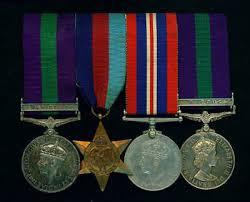

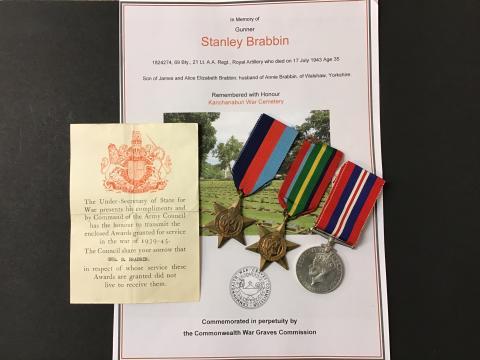
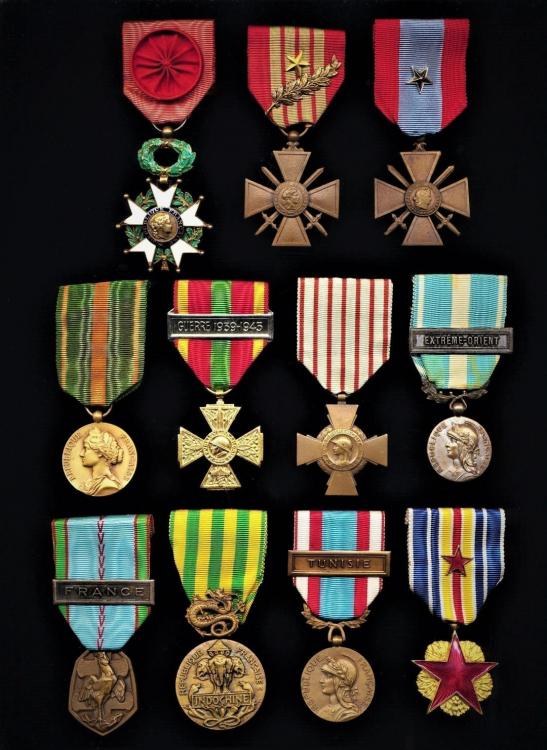
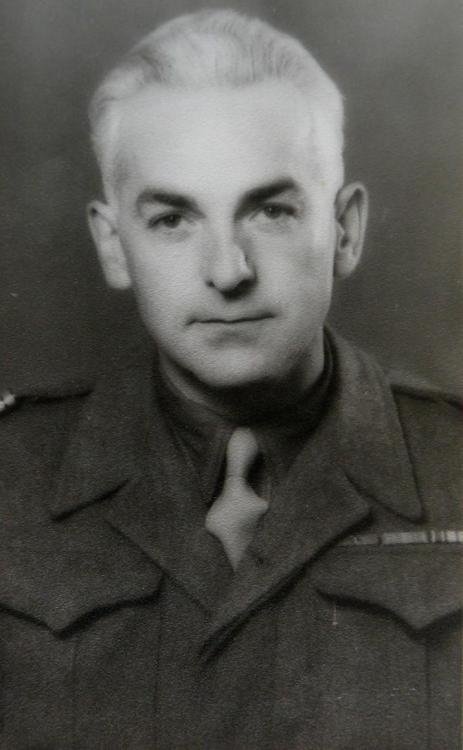
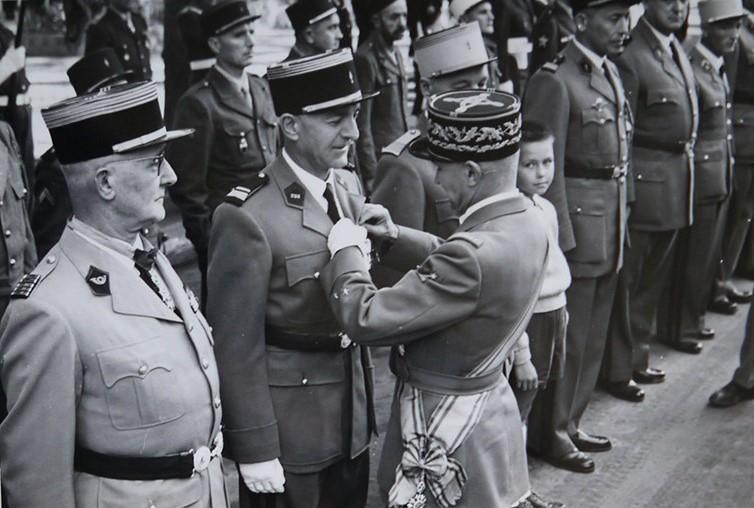

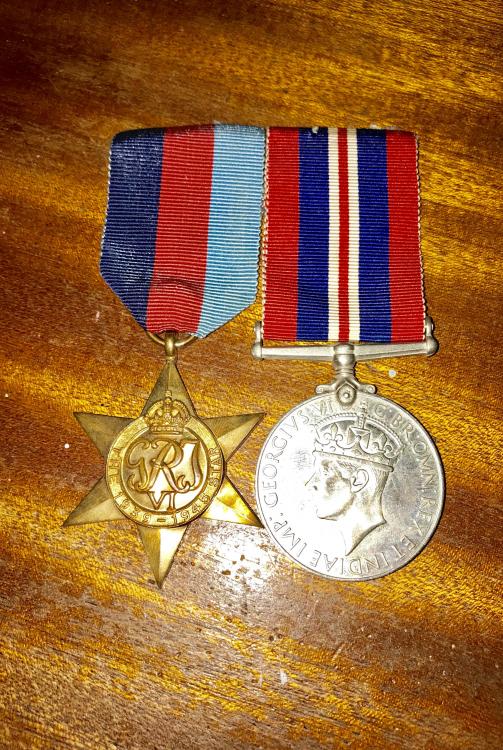
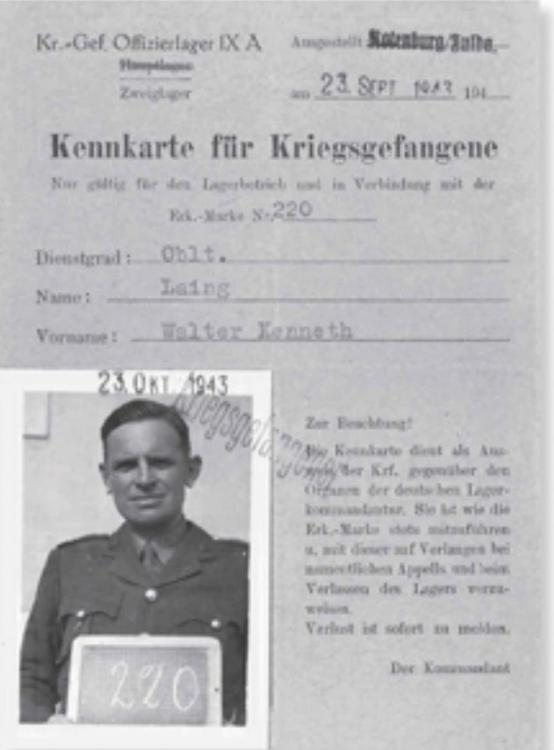
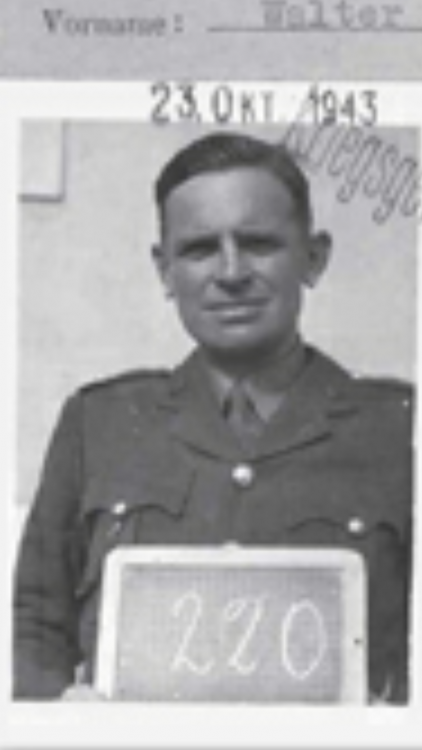

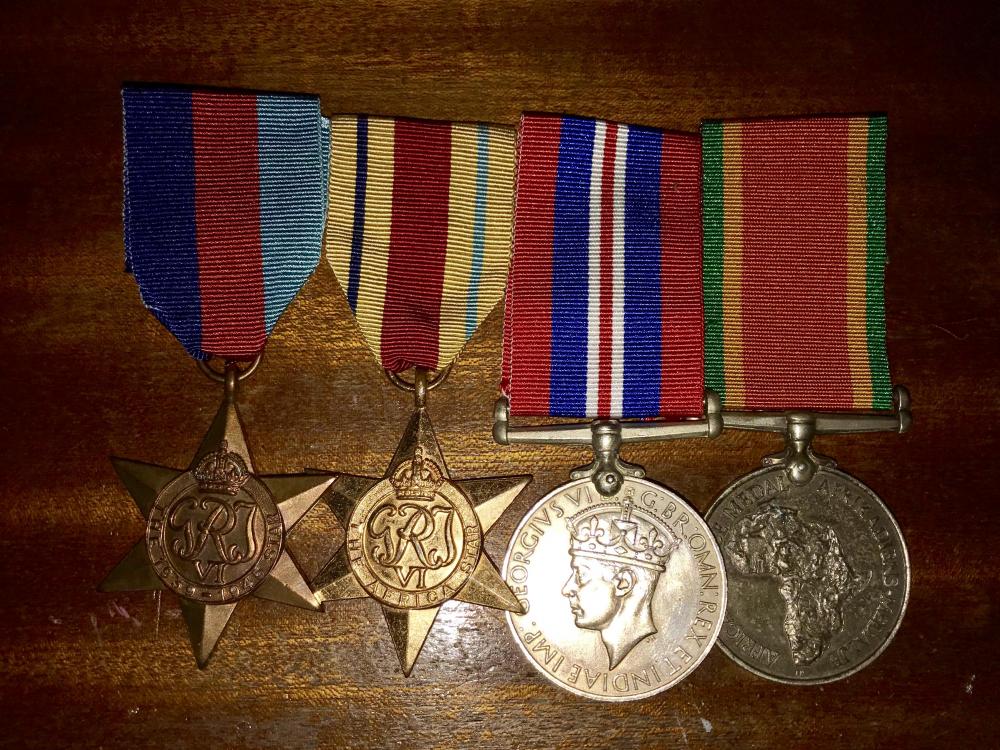
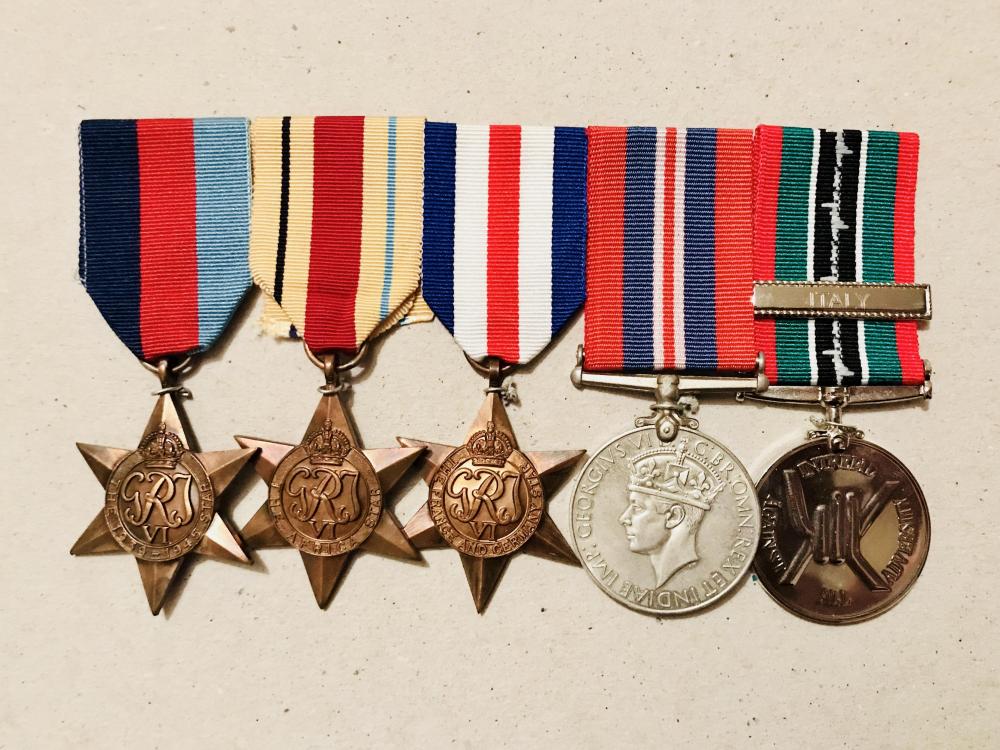

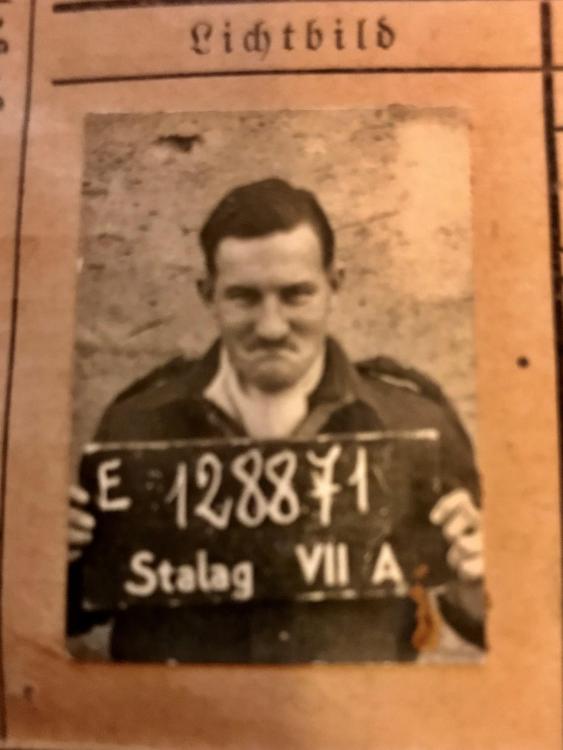
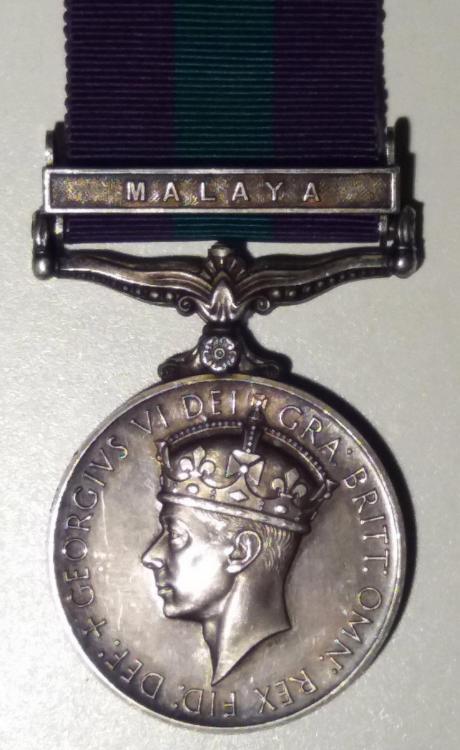
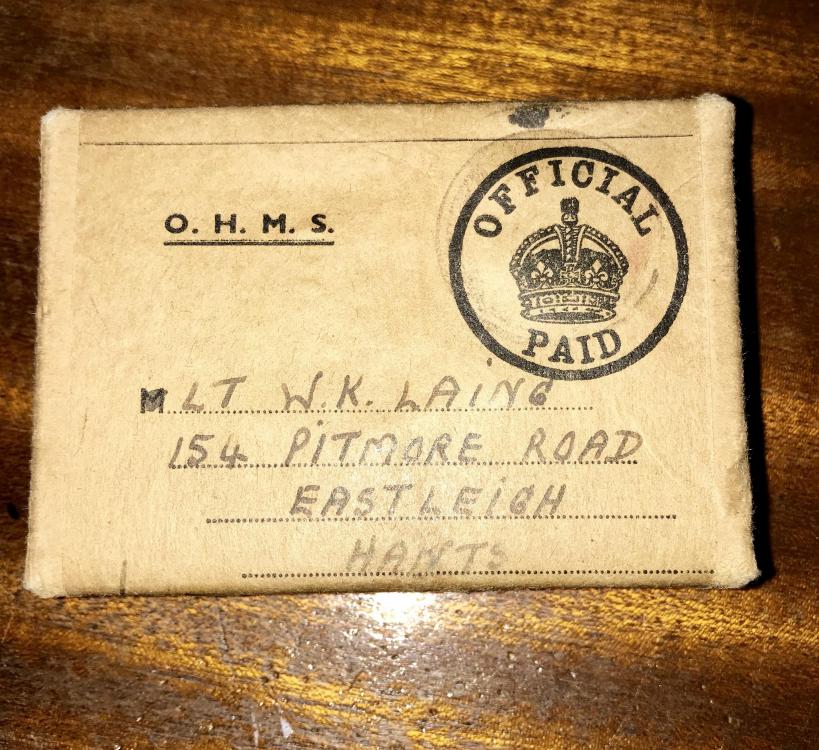
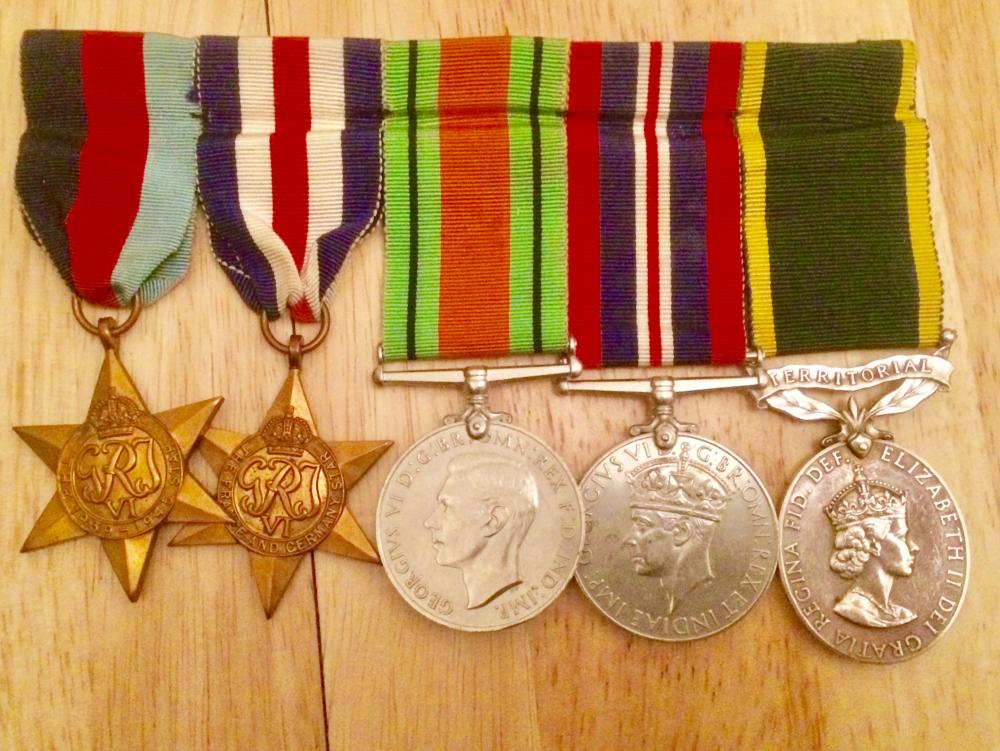
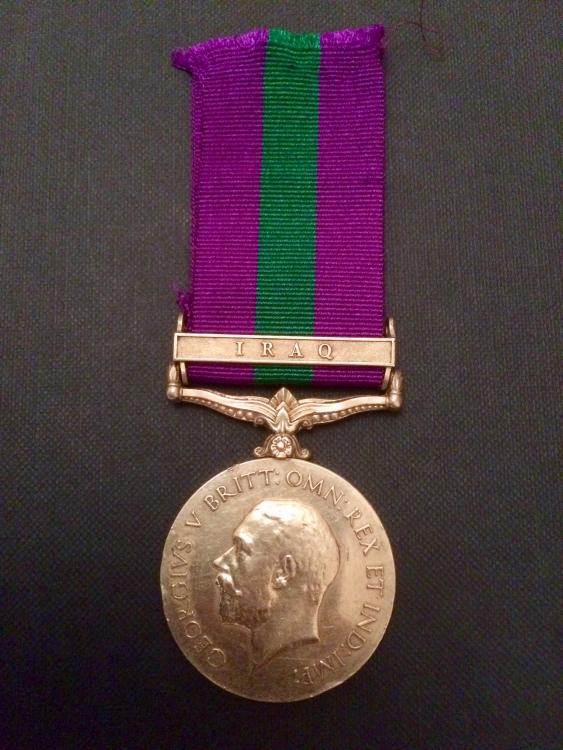
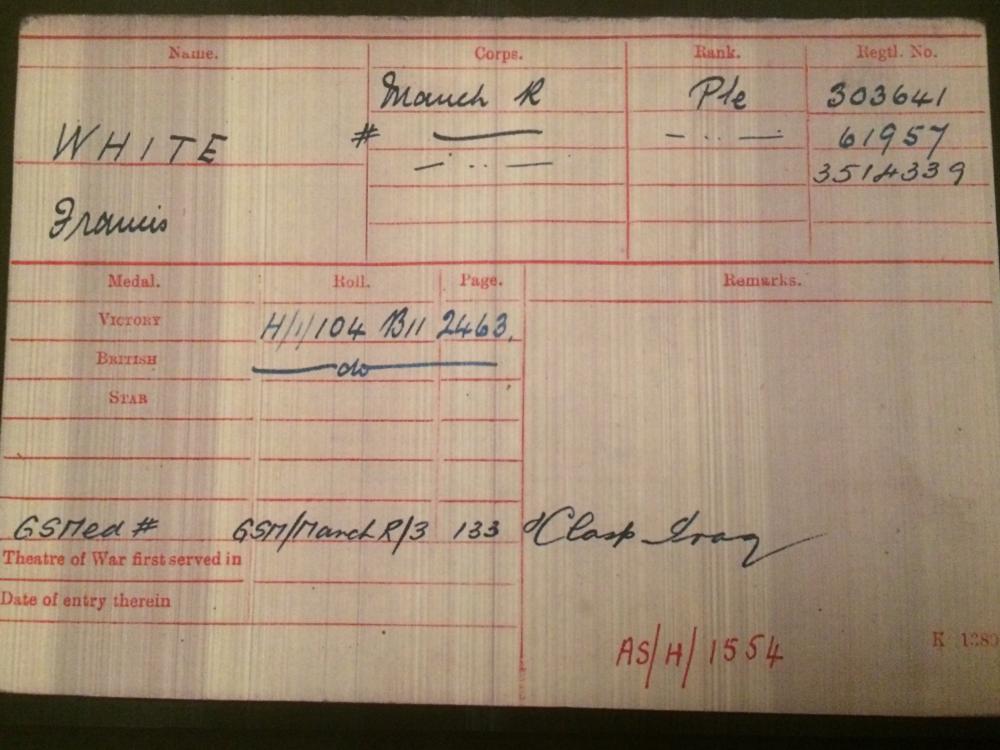
.jpg.c203305637c8e5ed6d8ab50a934e6754.jpg)
